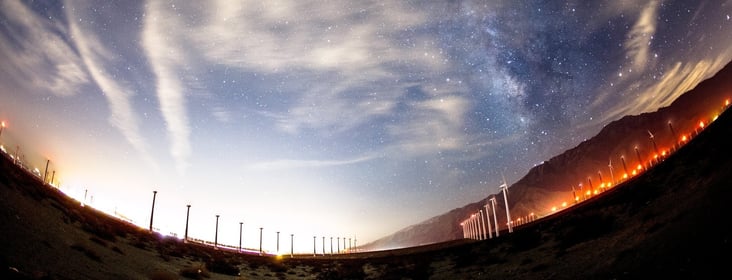
This week, much of the news media is tied up with what’s happening in Washington, D.C., but advanced energy never stops working. From Utility Dive’s story of advanced energy job growth to more coverage of the love affair between big business and advanced energy, to a California lawmaker musing on whether the state should run on 100% renewable energy, it’s been a week to remember.
First up this week is Utility Dive’s coverage of states boosting their renewable portfolio standards. Michigan, Ohio, and Illinois each strengthened (or in Ohio’s case, restored) their commitment to boosting renewable energy in the closing days of 2016. Vermont’s new Republican governor has affirmed his support of the state’s 90%-by-2050 renewable energy goal (the strongest policy in the Lower 48 so far). UD cites Clearview Energy Partners’ Timothy Fox in identifying Maryland, Arizona, and Massachusetts as states that could ratchet up their renewable energy requirements in the upcoming legislative session.
In Ohio, a freeze on the state’s RPS was set to expire at the end of 2016, but lawmakers attempted to extend that freeze an additional two years. Gov. Kasich vetoed the bill, saying the freeze would “undermine the progress” of Ohio’s growing advanced energy and the jobs it is creating. Kasich also said the bill limited choice in the state, saying it amounted to “arbitrarily limiting Ohio’s energy generation options.” We dig much deeper into the Ohio battle, including AEE’s work on the issue, here.
In making these commitments, state leaders often referenced that jobs that have been created by renewable energy development to date. We here at AEE see advanced energy job growth as simple fact. As of 2015, advanced energy supported more than 2.5 million U.S. jobs – employing as many people as grocery stores and supermarkets. Advanced energy is a diverse workforce, encompassing everything from construction workers to IT professionals and software developers. The folks in these jobs are the people who are bringing our nation’s energy system into the 21st century.
Those working to modernize our energy mix also include major multinational corporations. Greentech Media last week published a story on the Fortune 100 and Fortune 500 companies that have committed to renewable energy or sustainability targets. AEE put out a report in December that showed 71% of the Fortune 100 and 43% of Fortune 500 companies have commitments to advanced energy. Greentech Media quotes AEE’s report:
“Companies are deploying their private capital to finance projects that will bring in new jobs and tax revenue while improving the resource diversity of the grid and in some cases decreasing reliance on imported electricity,” according to the AEE paper. “But in many states, there are not clear mechanisms for companies to fulfill their commitment to procure advanced energy.”
It’s not just corporate purchasing that’s pushing advanced energy to the fore. It’s also price.
In making “10 predictions for 2017,” Michael Liebreich and Angus McCrone of Bloomberg New Energy Finance argue that the price of renewable energy has blown past parity with fossil fuels to provide the cheapest power available in some places. With what they call a shift to “base-cost” renewables – cheap enough to be the primary source of electricity instead of a marginal contributor to the power supply – will “force a revolution in the way power grids are designed and the way they are regulated.”
“The old rules were all about locking in cheap base-load power, generally from coal or hydro plants, then supplementing it with more expensive capacity, generally gas, to meet the peaks,” Liebreich and McCrone. “The new way of doing things will be about locking in as much locally-available base-cost renewable power as possible, and then supplementing it with more expensive flexible capacity from demand response, storage and gas, and then importing the remaining needs from neighbouring grids.” That means “a smaller and smaller proportion of conventional power generation has to provide a larger and larger amount of flexible supply for which it was never designed. We are reaching the point in the story where power system regulation will have to be fundamentally rethought.”
Meanwhile, in California, one legislative leader is fundamentally rethinking his state’s already ambitious energy goals, perhaps taking a cue from Hawaii’s advanced energy “postcard from the future.” Last year, Hawaii passed a mandate for 100% renewable energy by 2045. The LA Times posted a piece yesterday entitled, “It's time to talk 100% renewable energy, California Senate leader says.” According to the Times, California’s Senate President Pro Tem Kevin de León believes that SB 350, which requires the state to generate 50% of its electricity from renewable sources by 2030, “didn’t go far enough.”
“We probably should have shot for the stars,” De León said in an interview.
If California shoots for the stars, or anything else happens that affects the advanced energy industry, we’ll let you know about it in our weekly newsletter. Subscribe for free below.
